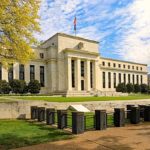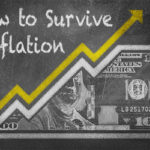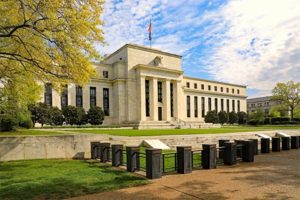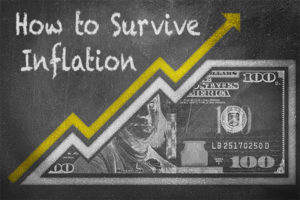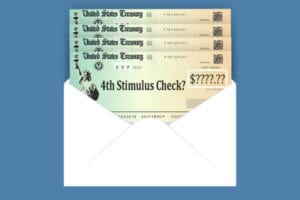Nonbanks Fill Demand from Borrowers with Poor Credit
The era when almost anyone with a pulse could get a loan or mortgage from a commercial bank ended with the financial meltdown of 2008. Today, tightened regulations and a reluctance among large lenders to deal with risky customers has shifted borrowing to smaller institutions that have adopted the group name “nonbanks.”
The major distinction between banks and nonbanks is that nonbanks focus on loans, rather than taking deposit accounts like checking and savings and aren’t as tightly regulated as traditional banks.
This is especially true in the mortgage market, where nonbanks held six of the top 10 positions for mortgage loans originated in the U.S. in 2017, according to Inside Mortgage Finance (IMF), a research company in Bethesda, Md.
That group included Quicken Loans, PennyMac, Freedom Mortgage, Caliber Home Loans, loanDepot and AmeriHome mortgage who helped the non-bank industry handle 51% of loan originations in 2017. That is a huge jump from just 9% of the market in 2009.
“Over the past seven years, there have been two major factors driving the rise in non-bank mortgage lending,” Guy Cecala, CEO and publisher of Inside Mortgage Finance, said. “One is the continued dominance of government-related lending (FHA, VA, Fannie Mae/Freddie Mac), which nonbanks tend to specialize in. The second is the withdrawal by major banks from government-related lending due to large settlements in the aftermath of the financial/foreclosure crisis.”
Consumers with Bad Credit Look to Nonbanks
The surge of nonbanks has created another option for borrowers with bad credit, who struggle to find mortgages at mainstream banks. These so called sub-primer borrowers have turned to nonbanks, an assortment of financial institutions that aren’t bound by the same rules that apply to federally regulated banks.
“There isn’t much nonprime mortgage lending going on these days, but what there is comes from non-bank lenders,” Cecala said. “Generally speaking, nonbanks tend to have slightly looser underwriting standards than banks across the mortgage-lending spectrum.”
The rates for nonbanks have become competitive over the last few years, in part because the loan-guarantees fees charged by Fannie Mae and Freddie Mac are similar to what traditional banks are charged. The nonbanks are competing on a nearly even playing field with regular banks.
Rule Changes Opened Door for Nonbanks
The 2008 financial crisis radically changed the consumer and real estate lending market. New federal regulations included in the Dodd-Frank Wall Street Reform and Consumer Protection Act of 2010 placed tough restrictions on bank lending.
The new regulations, which included demands that banks make more of an effort to be sure borrowers could repay the loans, combined with increased efforts to enforce the rules, made banks reconsider mortgage lending.
That, in turn, made it far harder for people with substandard credit to borrow from banks.
But finance, like nature, hates a void. The millions of Americans with subprime credit are a lucrative market for lenders prepared to take a risk. Since that market is so tempting, big banks devised a system that allows them to fund subprime loans without actually issuing them.
According to the Wall Street Journal, bank loans to non-banks increased six-fold between 2010 and 2017. Many of the big banks closed or curtailed their subprime lending operations early in the decade, but their funding of nonbanks means they still have a role, albeit an indirect one, in the sector.
Are Nonbanks Serving Borrower’s Needs?
The change has benefitted non-banks, but what about the borrowers? Many subprime borrowers are in the subprime category because they are already struggling with debt. Adding new debt at high interest rates can easily make their problems worse.
A better solution might be to defer borrowing and seek help from a nonprofit credit counselor or debt management company. If the borrower can pay off debt and improve a credit score, it might be possible to buy a car or other large purchase at lower interest with a commercial bank loan.
Of course, not everyone with a poor credit score seeks help. For those who don’t, the lure of subprime lending is obvious. Even though they can’t get a car loan for the 3% or 4% annual interest rate that a borrower with good credit pays, they still can buy a car. The problem is the interest rate might be 15%, which adds greatly to the financial burden of someone already having trouble.
Those higher interest rates are fueling the growth in subprime lending. Though commercial banks are reluctant to enter the market themselves, their loans to non-bank lenders mean they are participating.
While non-banks play a growing role in the consumer loan market, they’re also expanding in mortgage lending. The big banks, the nation’s biggest mortgage lenders a decade ago, have moved away from the business for a variety of reasons, including the new regulations and low interest rates.
Many only want to deal with borrowers who make large down payments and have sterling credit scores. Cecala said large banks will gradually return to mortgage lending to meet customer demand, a shift that will occur more quickly if federal enforcement of underwriting rules weakens.
“Banks have a love-hate relationship with the mortgage market,” Cecala said. “It’s very hard for a bank not to develop a mortgage business because that’s a major product their customers need.”
Nonbanks usually borrow from hedge funds, private investors and banks to fund mortgage loans. They typically sell the mortgages they write to Fannie Mae and Freddie Mac, the federally chartered giants of the secondary mortgage market, and use the proceeds to write new mortgages.
Since nonbanks don’t face the same regulatory scrutiny as commercial bank, they are often able to make loans to borrowers with lower credit scores. But nonbanks also face restrictions: They can’t sell their mortgages on the secondary market if the mortgages don’t conform to underwriting guidelines.
It’s unclear what might reverse the trend. The Trump Administration has pushed to loosen Dodd-Frank regulations, and a return of higher interest rates might make consumer and mortgage loans more enticing for commercial banks.
For consumers, the shift to non-bank lending can mean higher interest payments. Paying more interest adds to a borrower’s financial burden and contribute to debt problems that require help from a nonprofit credit counseling and debt management company.
Sources:
- Rudegeair, P., et. al. (2018, April 10) Big Banks Find a Back Door to Finance Subprime Loans. Retrived from: https://www.wsj.com/articles/big-banks-find-a-back-door-to-finance-subprime-loans-1523352601?mod=searchresults&page=1&pos=1
- Cox, J. (2015, February 18) Banks Aren’t Lending to Consumers; Here’s Who Is. Retrieved from: http://nbr.com/2015/02/18/banks-arent-lending-to-consumers-heres-who-is/
- Lerner, M. (2017, February 23) The Mortgage Market Is Now Dominated by Non-Bank Lenders. Retrieved from: https://www.washingtonpost.com/realestate/the-mortgage-market-is-now-dominated-by-nonbank-lenders/2017/02/22/9c6bf5fc-d1f5-11e6-a783-cd3fa950f2fd_story.html?utm_term=.d92090fc78fd





